
What are you doing here? This place has been untouched for years! If you want my latest posts go to kver.ca for my latest updates.

What are you doing here? This place has been untouched for years! If you want my latest posts go to kver.ca for my latest updates.
Today I streamed the first half of the Plasma 5.11 wallpaper production, and it was an interesting experience. The video above is the abridged version sped up ~20x, heavily edited to the actual creation, and should be a fun watch for the interested.
It looks like there’s another full work-day that needs to go into the wallpaper still, and while I think I’ll also record the second half I don’t think I’ll livestream it; while I’m very appreciative of the viewers I had, it was quite a bit of extra work and quite difficult to carry on a one-man conversation for 8 hours, while working, for at most a few people. Like I said, I will still record the second half of the wallpaper for posterity, I simply don’t think I’ll be streaming it. I do think I’ll keep streaming the odd icon batch, as those are about as long as I want, so they can be kept to a digestible hour.

The wallpaper as it is is based on an image of a reef along with a recent trip to the beach during the Blue Systems sprint. There’s still a long way to go, and I can easily see another 8 hours going into this before it’s completed; there’s water effects, tides, doing the rocks, and taking a second pass at the foam – among other things – especially before I hit the level of KDE polish I’d like meet.
Looking at it, I may also make a reversed image with only the shoreline components for dual-screen aficionados.
Within the next week or so I’ll post the next timelapse after I complete the wallpaper. 😀
It’s getting to be that time of the release cycle where I’ll be making a new wallpaper for the next Plasma release. For the 5.11 cycle I’ll be doing things a bit differently owing to a request on Reddit several weeks back; this wallpaper is going to be done over a livestream!
The wallpaper livestream will be on Saturday the 20th, and start ~10:00am Eastern Daylight time, or 2:00pm GMT. I’m going to estimate the stream to last ~8-10 hours, with a couple short breaks somewhere in the middle.
The aim will be to get the majority of the wallpaper done during the stream (they take that long!), with anything done beyond the stream falling into tweaks and correction territory. There’s also the chance you may see a few attempts until I settle, as I have a few designs in mind and there may be some experimentation there along with some spectacular failures along the road.
I’ll keep a chat open, and I’ll field any questions I get, but beyond that I figure it will be the kind of stream people might like as background noise. I also suspect it might be the kind of thing people will want to minimize now and again – I think it will be a passive viewing experience. When the livestream is over I’ll go back and create a sped-up version which I’ll post on YouTube.
Which brings me to an important question I have for everyone who does or is into livestreams; I’ve never streamed before! I know about Twitch and YouTube, even Hangouts, and have heard about OBS; are there any recommendations for which streaming service/software I should broadcast with? Comment here (or on Reddit, I’ll be posting there) with input as to the best way to stream a fairly long art session. Also, I’m considering using a webcam as well – please let me know if that’s of interest, and if there’s software for a total rookie to do it. I’ll post the info on where I’ll be streaming once I figure out where it will be.
Lastly, if the stream is fairly successful at least on a technical level, I’ll look into shorter episodes featuring Aether icon development which would probably see rounds of 3-4 icons being completed in the space of a shorter session.
Earlier this week the decision was made to switch from Drupal to WordPress as the CMS used for the KDE.org main website. While Drupal is certainly a fine system, the decision to switch was borne when my quick work to update a WordPress asset turned into a serious venture much more successful than my work with Drupal. Prior to my contributing to KDE I used to develop on WP, and I was surprised to find out my experience largely held in this new version. In hindsight, WordPress was the obvious option considering this.
A round of discussion about formally switching ensued, and many other great reasons to use WordPress were present, including the much larger number of KDE websites on the platform. I won’t get into it too much as I’d instead like to go over the work done over the past week and some of the features coming to KDE.org Aether template which are already complete; today I’ll focus on the header, which had the most love.
The header will feature an up to 3-level menu, and in the future it may be made to not restrict the number of levels. But, for now, 3. It nicely scales back to two or one levels as appropriate. Currently the theme will pull featured images from root navigation elements and display them in the dropdown, but in the future this will likely become a navigation-specific setting for more control. As expected, the navigation is completely customizable. It is also responsive, and when it can no longer accommodate the number of menu items for the width of the given screen it will switch into ‘hamburger mode’ which works very well on mobile.

My personal favorite feature so far is the live search. This probably had the most work this week, and I really wanted to nail it down well. It’s a search-as-you-type system, but has several built-in features to avoid overloading servers, such as an adaptive delay until it performs a request and temporary localstorage caching.

Lastly, the theme is being built to be completely customizable for suitability on not only KDE.org itself, but even as far down as personal blogs which may not demand the full range of features being built into the design.

The design itself is forked from KdeTheme theme, which in turn was forked from Activello. It features thoughtful localization, and work is being done to make the individual components more modular so maintenance will be a cinch over the long game. There are still many features, options, and utilities being poured into the design, and I’ll be posting updates semi-regularly as the progress continues.
Ultimately, the KDE.org theme itself will be generic enough for use on any KDE-related site. As it matures enough to be in use on regular websites, the design will also be loaded onto the WordPress theme directory, allowing sites which may not enjoy the full KDE infrastructure (such as personal developer blogs) to easily install and keep the theme updated.
If you maintain a KDE-related website and are using Drupal, depending on the breadth of your content, we still have options for you. If you have a smaller website, I’ll be offering to port to WordPress if you desire. If you have features required which can be folded into the larger theme I will do so as appropriate, otherwise we can evaluate if a small site-specific plugin could serve that use-case. If you have a Drupal site too large to move – or you simply wish to stick on Drupal – after the KDE.org wordpress work is considered complete, the existing Drupal 7 theme will be updated to service existing websites. For anyone else maintaining a website looking to use this design I’m also taking feature requests for the theme and design elements at this point. Please send inquiries and requests to the kde-www mailing list.
Beyond the design itself, we have some exciting plans for managing content and applications which I’ll be posting about later.
KDE.org quite possibly has one of the largest open-source websites compared to any other desktop-oriented project, extending beyond into applications, wikis, guides, and much more. The amount of content is dizzying and indeed a huge chunk of that content is about as old as the mascot Kandalf – figuratively and literally.
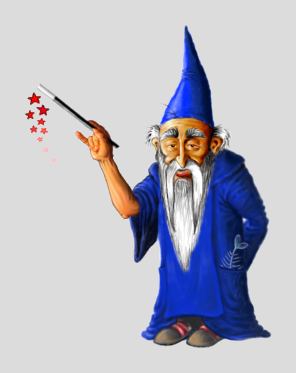
The KDE.org user-facing design “Aether” is live and various kinks have been worked out, but one fact is glaringly obvious; we’ve made the layers of age and look better by adding another layer. Ultimately the real fix is migrating the site to Drupal, so I figured this post would cover some of the thoughts and progress behind the ongoing work.
Right now work is on porting the Aether theme to Drupal 8, ideally it’ll be “better than perfect port” with Drupal optimizations, making better use of Bootstrap 4, and refinements. Additionally, I’m preparing a “Neverland-style” template for those planning to use Aether on their KDE-related project sites, but it’s more of a side-project until the Drupal theme lands. Recently the theme was changed to use Bootsraps’ Barrio base theme, which has been a very pleasant decision as we get much more “out of the box”. It does require a Bootstrap library module which will allow local or CDN-based Bootstrap installations, and while at first I was asking “why can’t a theme just be self-contained?”, now I’m understanding the logic – Bootstrap is popular, multiple themes use it, this will keep it all up-to-date and can be updated itself. I do think maybe one thing Drupal should do is have some rudimentary package management that says “hey, we also need to download this”, but it’s easy enough to install separately.
If you have a project website looking to port to Aether, I would first advise you simply waiting until you can consider moving your page to the main Drupal installation when it eventually goes live; in my perfect world I imagine Drupal unifying a great amount of disparate content, thus getting free updates. Additionally, consider hitting up the KDE-www mailing list and ask to help out on content, or place feature requests for front-end UI elements. While I’m currently lurking the mailing list, I’ll try to provide whatever info I can. On an aside, I had some Telegram confusion with some people looking to contribute and concerns from administrators, so please simply defer to the mailing list.
In terms of the Aether theme, I will be posting the basic theme on our git repo; when it goes up if you have Bootstrap and Twig experience (any at all is more than I had when I started), please consider contributing, especially if you maintain a page and would migrate to Drupal if it had the appropriate featureset. I will post a tiny follow-up when the repo is up.
In my off time I’ve been closely examining the Legend of Zelda Link to the Past tilesets and sprites, and I’ve been learning a huge amount about how that game is assembled visually. it’s amazing how much they managed to do with the limited resources of the SNES.
For a game I’ve played religiously as a child, it’s interesting to see the imperfections which I completely glossed over even after several complete playthoroughs. There’s also some neat workarounds Nintendo did while preparing their graphics.
So here’s some “trivia” I found while closely examining the various maps and shots of the game;
Anyway, those were some fun facts.
Zelda: A Link to the Past is simply an amazing piece of work, and the tilesets are remarkably compressed for what they were able to create; PNG images containing the complete light world are larger than the entire game itself, not including the alternate dark world, insides of houses, or dungeons.
I’m very excited to let everyone know that as of tomorrow I’ll officially be joining Blue Systems, working full time on KDE and related projects! The chance to really immerse oneself completely into something you love and also work alongside people you absolutely respect is mind-blowing.
I would like to deeply thank Blue Systems for this opportunity, I hope my contributions will match the awesome generosity that everyone in the community has given allowing me do this. Thank you!
It’s been too long since I’ve posted on Planet… I missed you! But despite my slothish activity there are rituals to be followed, and so comes a wallpaper for Plasma 5.8;
Probably the first thing I’ll mention is that the Plasma 5.8 wallpaper will be shipping with a 4K UHD version. The last wallpaper was meant to have a 4K version, but it simply didn’t happen. Seemingly everyone is beginning to enjoy screens with high pixel densities, so it’s about time we shipped wallpapers to match, and it’s a fun bullet-point for an LTS release.
Here it is;
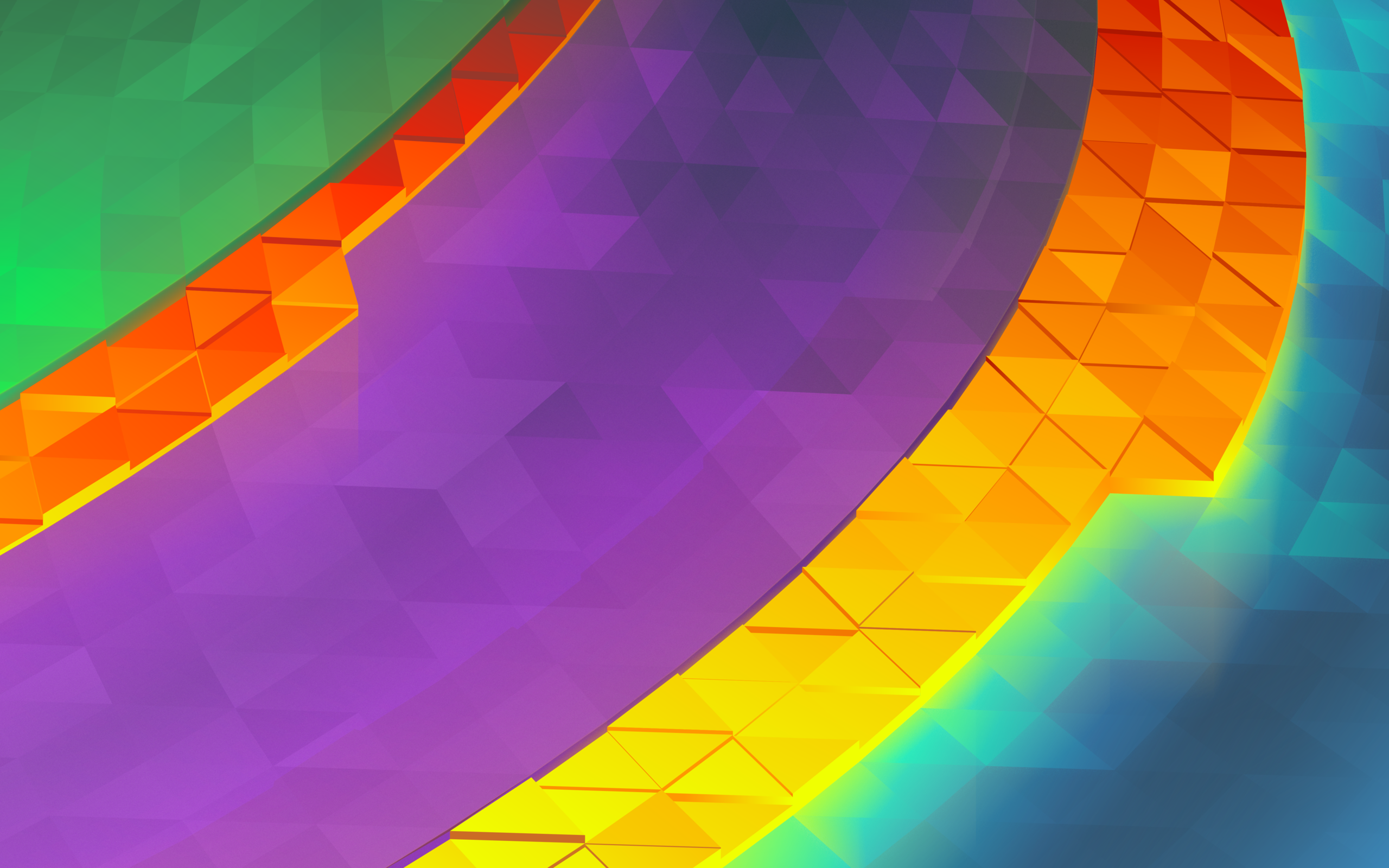
We still have a short window for tweaks and adjustments, so if there’s feedback for minor changes I can try to fit them in. I know a couple minor tweaks I’d like to make as well.
The general theme of the wallpaper is to try bringing back the vibrancy of earlier wallpapers; there’s been a trend making things progressively darker, and it had been mentioned that several people missed the energy of older wallpapers. With that in mind, hopefully this iteration has that light and energetic vibe without looking like a hot mess.
…
On a more personal note, some weeks ago the company I work for had been bought out. Because of that everything I was working on had to be put to the backburner while I sorted things out. I had to make some extremely difficult decisions, and I’d be lying if I said it didn’t mess me up for a while there. It’s been intense. I also still have i’s to dot and t’s to cross.
Ultimately it means that I’ll be moving from coast-to-coast and south of the border to work in the United States. It’s a bit freaky penetrating the bureaucratic nightmare that is immigration forms, and sobering as I send them out. But I’ll be joining the ranks of many great Canadians who crossed the border: Jim Carry, William Shatner, Mike Meyers… *cough*Beiber*cough*
I can’t say I know what this will do to my contributions; whether or not my new job will give me more time, less time, or if I’ll need to stay back until I even really know 100% what’s going on. I certainly don’t plan to stop contributing, but I can’t say how active I’ll be in the near future until I see where the chips fall, things are also still in a state of upheaval.
I am, however, still looking forward to Akademy. I’m set to give a 30-minute talk on design iteration; whether or not you are creating a new application or maintaining an old beast, effective iteration is the key to great design. 😉

With Plasma 5.6 long out the door, it’s time for the traditional changing of the wallpapers! Or at least, showing what the next wallpaper will be.
With Plasma 5.7 we won’t be venturing too far from where we are in 5.6. As I mentioned in a previous post about wallpapers we have been paying attention to the feedback, trying to find something that hit the right balance. The 5.6 the wallpaper seemed to hit that mark, so you’ll see fewer dramatic swings in the wallpaper direction; we’re goanna stick with what works for a while.
Here’s the 5.7 wallpaper, “Skylight”;
I’m keeping very close to the formula of the current wallpaper, and generally this is what people should expect for a few wallpapers for the next few releases of Plasma. I’ll vary the ‘material’ and positions a bit in the future, but I didn’t want to do that too much during our transition to perspective this release… Perspective was the one thing I meant to do with the current wallpaper, but for various reasons it didn’t happen.
One thing that also came up was assembling the old wallpapers somewhere for the people who preferred a previous release. I’d like some opinions and feedback on a few questions if we decide to do this;
So, what do you think we should do with the older wallpapers? Comment below, let us know!
During the Sprint at CERN everyone got to take a tour of the Large Hadron Collider, it was a fantastic time and a proud moment for members of the KDE community to see the massive and incredible machines which happened to have KDE software running at the controls.
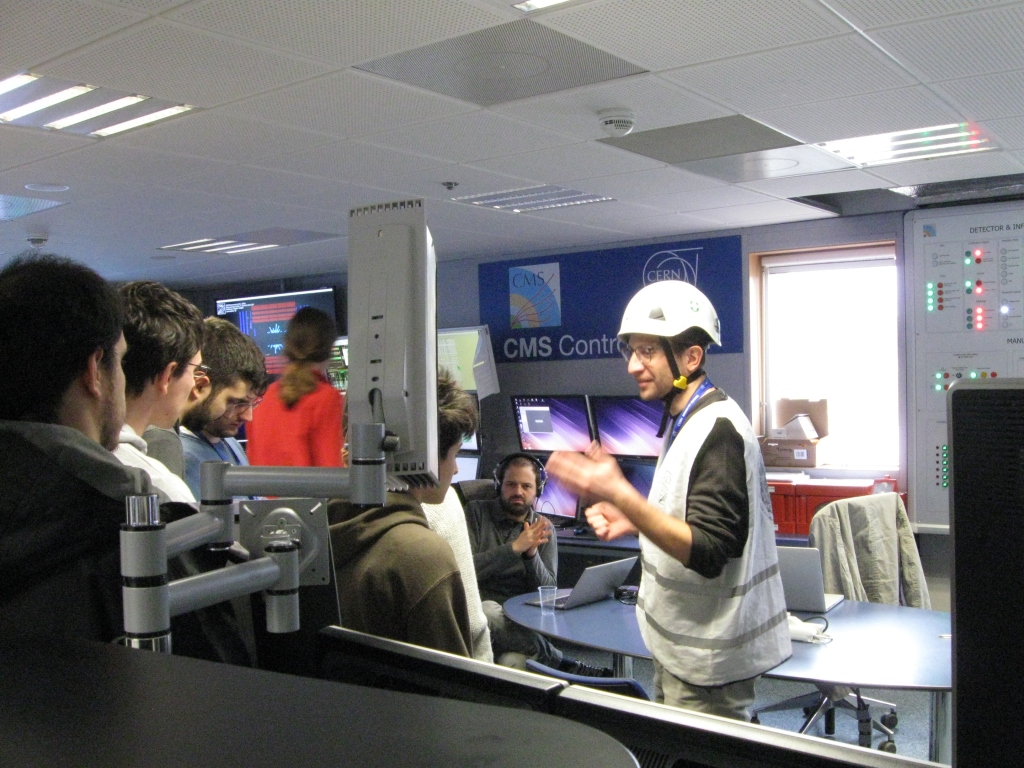
We had a rare opportunity to actually go 100 meters underground and look at the scope of it – grand and atomic – and look at one of the greatest achievements of society with our own eyes.
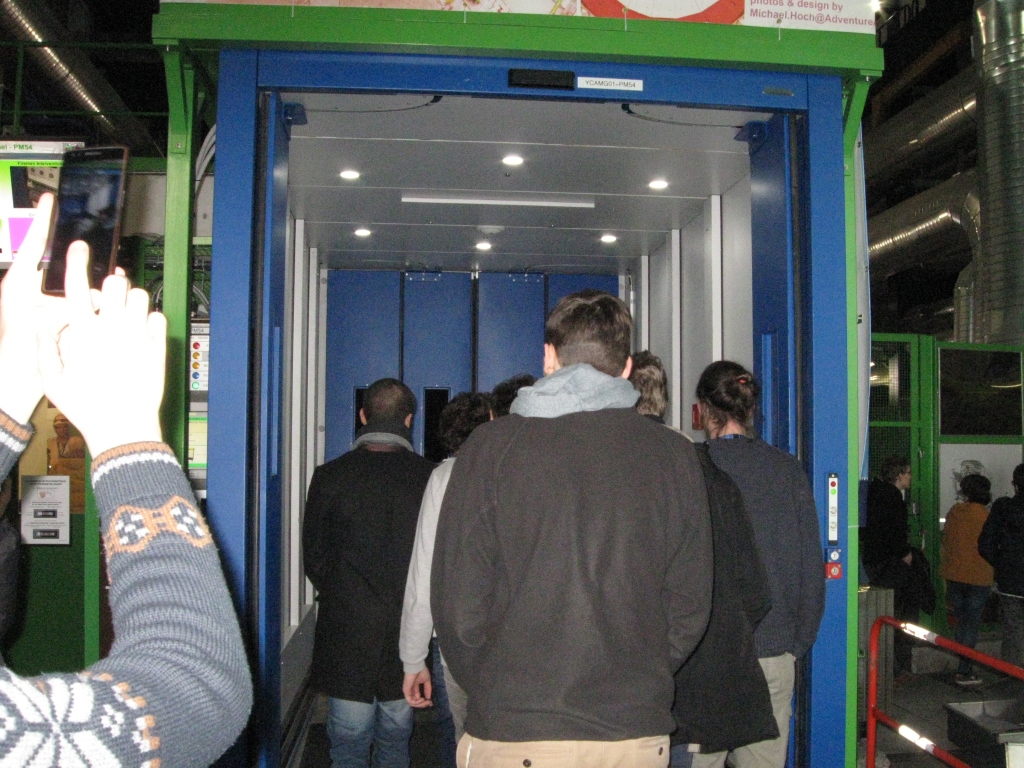
Once we got our eyes on the massive structure a couple of the guys pulled out a bag and said “Hey, want to see something cool?”
Of course.
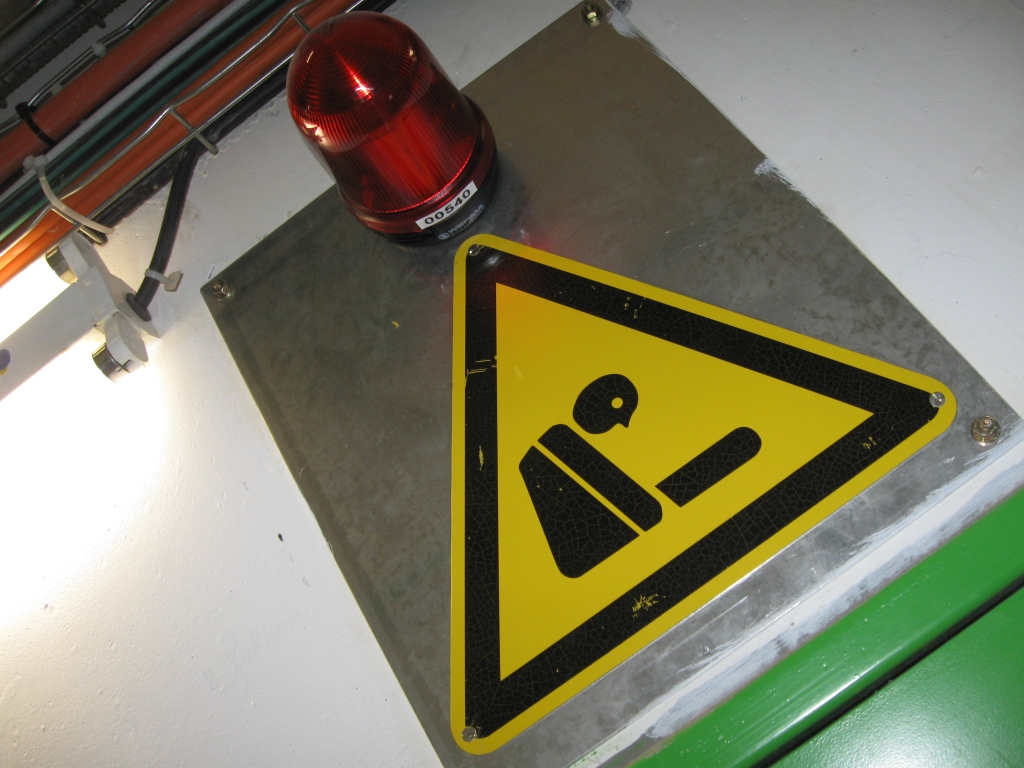
Over at the injector (where they feed matter into the LHC) some of the other VDG members had snuck in a bag of paintballs. It was ON. Much like a pneumatic tubes of the late 1800s, the LHC consumed the ammo with gusto. I was sure our giggling would give us away, but we made sure people crowded around the controls before anyone knew what we were doing.
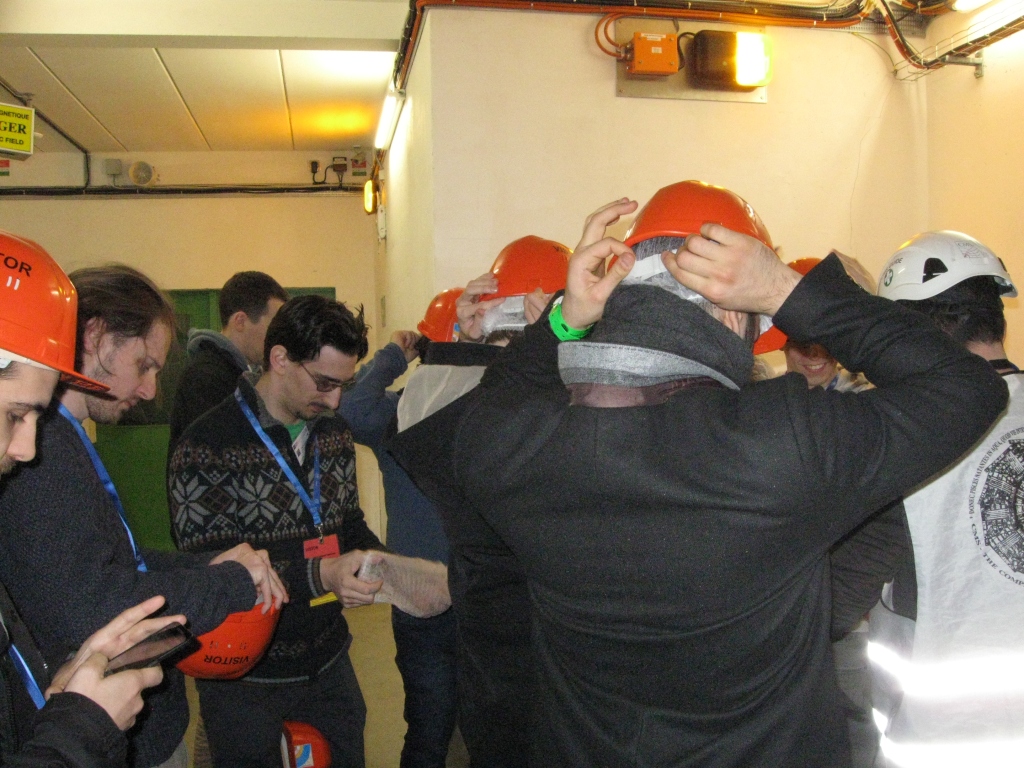
The way the LHC was laid out, there was various catwalks surrounding where the beam passes through. We found a pair of convenient walkways ripe for us to jump across which would let us get hit – we didn’t need to worry much about timing, after all, the gauges already indicated the first paintball was going 92.3% the speed of light.
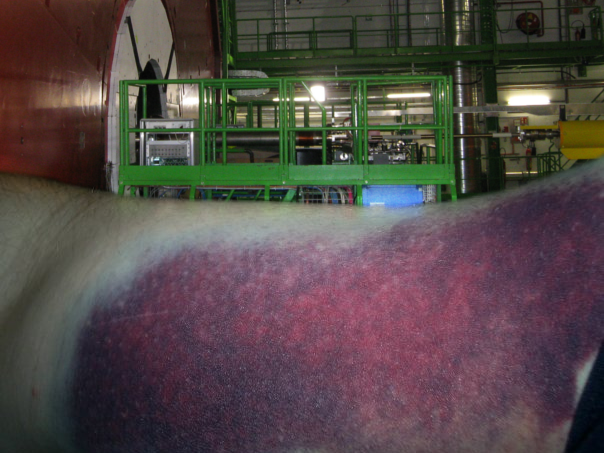
It was a good time. We had some bruises, other peoples heads and arms simply vanished at near relativistic speeds. We lost 3 members of the VDG, 5 WikiToLearn editors, and Sebas was the only Plasma developer to go, though watching him get sucked into a black hole made by a near-light-speed paintball was really, really cool.
As an aside, since he’s beyond the event horizon, I’ve taken over his blog. Any amazing accomplishments he makes from now on were actually all me, and I should get the credit.
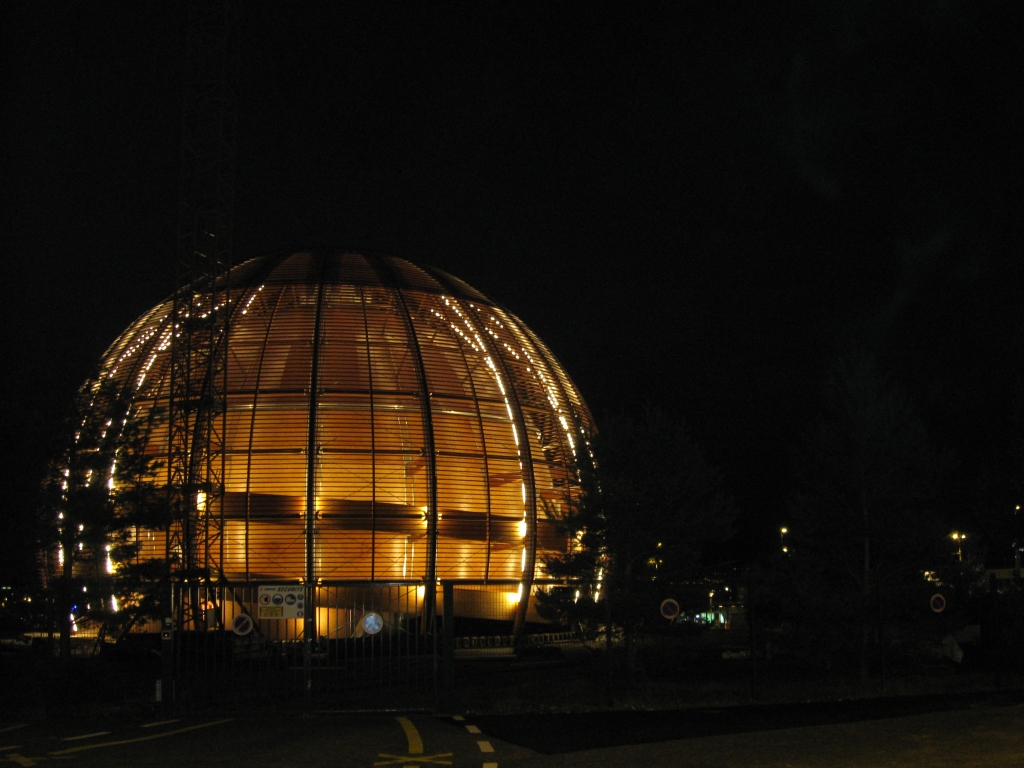
And that was our tour of the LHC. We’re confident in our productivity to take over for the now deceased community members, and we firmly believe the sacrifice was totally worth it. After the tour we got into our cars to drive back to the sprint proper – albeit with some more shoulder room in the vehicles – and we got back to work after turning the LHC into the worlds largest paintball cannon.